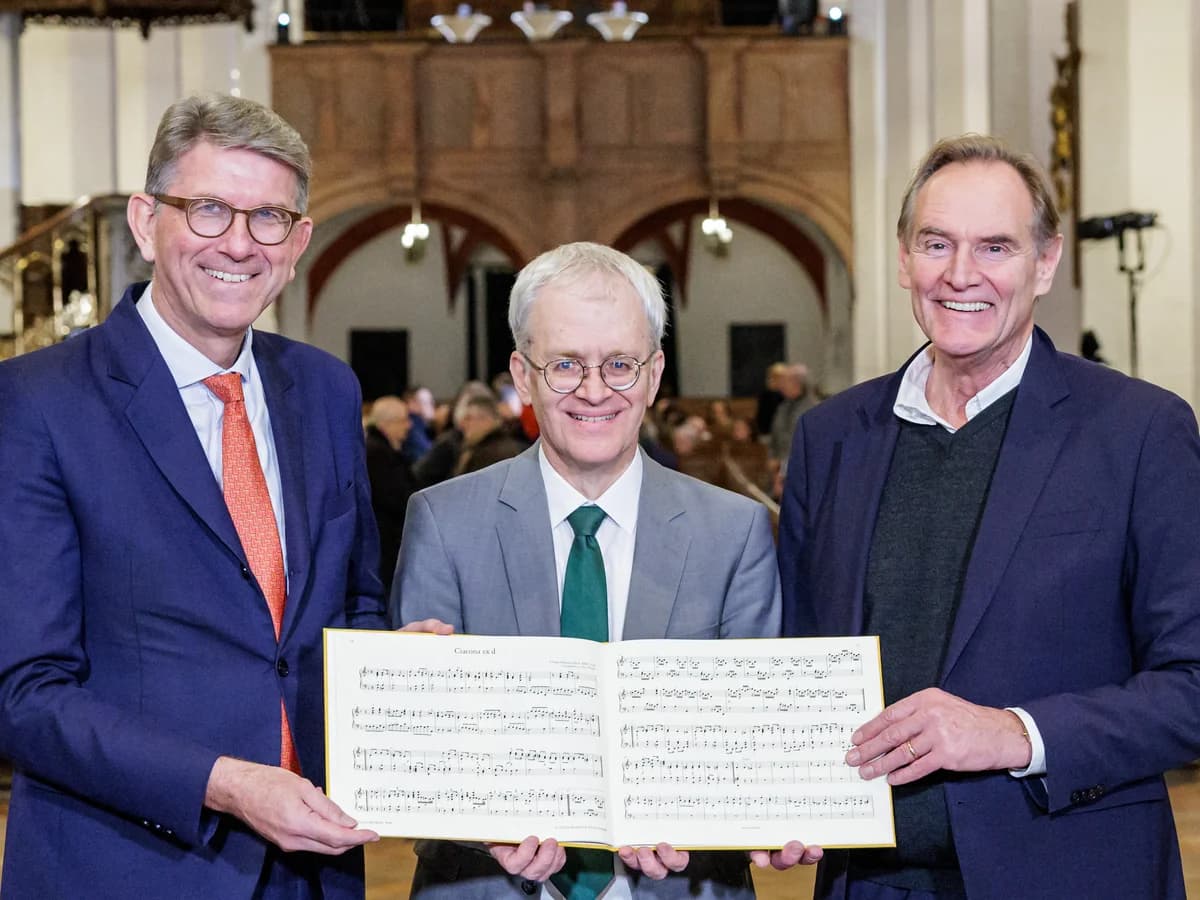Loading News Article...
We're loading the full news article for you. This includes the article content, images, author information, and related articles.
We're loading the full news article for you. This includes the article content, images, author information, and related articles.
A thirty-year musicological investigation culminates in the world premiere of two organ pieces by a teenage Johann Sebastian Bach, reshaping our understanding of the composer's formative years.

LEIPZIG, GERMANY – Two previously unknown organ works by Johann Sebastian Bach were performed for the first time in approximately 320 years on Monday, November 17, 2025, at the historic St. Thomas Church in Leipzig. The discovery and authentication of the pieces, titled Chaconne in D minor BWV 1178 and Chaconne in G minor BWV 1179, represent a monumental event in the world of classical music, offering fresh insight into the early creative period of the celebrated composer.
The world premiere was performed by renowned Dutch organist and conductor Ton Koopman, who is also the president of the Leipzig Bach Archive. The performance took place in the very church where Bach served as cantor for 27 years and is now buried. Germany's Culture Minister, Wolfram Weimer, hailed the discovery as a "great moment for the world of music" and a "global sensation" during a press conference preceding the event.
The journey to this premiere began over three decades ago, in 1992, when researcher Peter Wollny, now the director of the Leipzig Bach Archive, first encountered the anonymous and undated manuscripts. He discovered them while cataloguing Bach manuscripts at the Royal Library of Belgium in Brussels. Wollny was immediately intrigued by stylistic characteristics that pointed towards the young Bach, but definitive proof of authorship remained elusive for years.
The critical breakthrough came recently through painstaking musicological and archival research. A key piece of the puzzle was identifying the copyist of the manuscripts. Researchers eventually matched the handwriting to Salomon Günther John, a pupil of Bach's in the town of Arnstadt. Earlier samples of John's writing from around 1705 provided the definitive link, confirming that he had transcribed the works during his studies with the composer. "I searched for a long time for the missing piece of the puzzle to identify the compositions – now the whole picture is clear," Wollny stated at the presentation. Following this verification, the two chaconnes were officially added to the Bach Works Catalogue (BWV) on Monday.
The organ works are believed to have been composed around 1705, when Bach, then approximately 18 years old, held his first post as an organist in Arnstadt, Thuringia. This period is considered foundational for his development, where he began to synthesize various German musical traditions. According to Wollny, the pieces exhibit features unique to Bach's compositions from this era, combining variation and ostinato techniques with extended fugues, and showing the influence of his teacher, Georg Böhm.
Performer Ton Koopman described the pieces as being "of a very high quality" and predicted they would become a valuable addition to the organ repertoire, noting their suitability even for smaller organs. Canadian pianist and Bach specialist Angela Hewitt commented to The Guardian that the works are "quite identifiable with Bach's early style, in which the contrapuntal writing is not yet what it would become, but the imagination, grandeur, and sheer joy in playing are all there in abundance."
While the discovery has no direct ties to Kenya or the East Africa region, its cultural impact is global. The addition of new works to the canon of a composer as universally revered as Bach is an exceptionally rare event. It enriches the global cultural heritage and provides new material for musicians and scholars worldwide. For Kenyan audiences and classical music enthusiasts, it offers a moment to connect with a significant event in music history, highlighting the ongoing process of discovery that keeps the classical tradition vibrant and evolving.
The unveiling in Leipzig, a city synonymous with Bach's legacy, underscores the meticulous scholarship required to preserve and understand our shared artistic history. The discovery not only expands the known body of Bach's work but also deepens the narrative of his early genius, proving, as Koopman noted, that "genius comes" early and not just later in life. The new compositions are now available for study and performance, promising to enrich concert programs and recordings for generations to come.